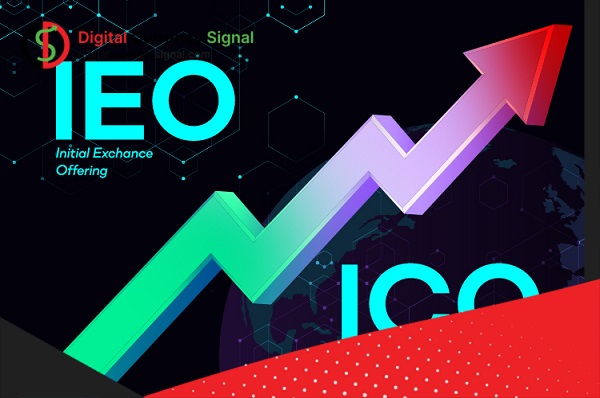One of the most important decisions for independent blockchain developers is choosing the right method for implementing smart contracts. SmartWeave is an additional solution for implementing smart contracts in the blockchain EVM system. This article explores the advantages of Ethereum Virtual Machine EVM and SmartWeave as two different options for developers.
Getting to know SmartWeave
SmartWeave is a model for evaluating the state of smart contracts in a non-flammable data layer such as Arweave. The unique value of SmartWeave is that it has a very broad potential to create highly efficient and targeted decentralized applications and serves as a complementary framework where EVM fails. Since the data layer does not perform calculations arbitrarily, SmartWeave leaves it up to the caller to evaluate the current state of the contract using lazy evaluation.
Case-based evaluation, or lazy evaluation, is a planning technique that ensures that evaluations are performed only when necessary and at a certain interval. The technique in question allows programs to use and process data such as very large and long tables or lists in a short time, in an appropriate and desired quality.
To measure the current state of the contract on a case-by-case basis, the caller checks and executes all contract interactions (Arweave transactions) from inception to date and replays the contract state from scratch. In fact, Arweave smart contracts are a series of ordered operations (C, I, Ts), where “C” is a part containing the contract code, “I” is a part containing the initial state and “T” a sequence. AND.
T creates transactions related to the initial contract. When the client reaches the status evaluation section, it uses C to get the code and I to get the initial status and contract code thereafter for each recorded transaction (if valid). apply. Below is a visual overview of this architecture to better understand the main concept:
SmartWeave is a framework designed to build a reliable, fast and ready smart contract engine in Arweave. The most popular implementation, Warp Contracts, focuses on achieving this goal. Warp is described as an advanced SmartWeave contract due to its ability to overcome some of the key obstacles associated with standard instances of the SmartWeave protocol.
These obstacles include: lack of cache leading to lower performance, lack of a reliable gateway for SmartWeave transactions, and inability of the protocol to provide security and guarantee for contracts. In addition to the basic features, the Warp SDK includes a very detailed caching layer that significantly increases the performance of lower case detection.
The package includes easy-to-use installation and maintenance methods, customizable plugins that allow users to extend the SDK in any way; A specialized smart contract tester, a set of workflow nodes and a number of other must-have features. Additionally, the Warp core team has developed a number of dedicated plugins, including the EVM Portable Toolbox, EVM wallet support, EtherJS support for the SmartWeave environment, and a few others. Warp currently supports JavaScript/TypeScript, WASM, and Rust.

Difference between EVM and SmartWeave
The security of EVMs is intrinsically linked to the consensus technology of its underlying blockchain network. Similarly, SmartWeave also relies on the superior security and stability of the Arweave blockchain network, which includes verified blocks through the SPoRa protocol. By design, EVM implements the currency market in its core protocol. Fee markets use a first-price auction to determine transaction fees, so that the winning transaction with the highest bid is processed before other transactions. Challenges related to network scalability are particularly evident during periods of high demand, such as the design of the global Ethereum virtual machine market.
For example, when a contract experiences significant activity such as the minting of NFT tokens, transaction fees increase for all users on the network, even those not directly involved in the high-demand activity.
Arweave offers an alternative to traditional tax markets by using a reward pool and a Merkel root for all data, called public interest. Adding new data to the system updates the Merkle tree and adds AR tokens to the reward pool without increasing the computational cost. To overcome the limitations of warehouse data processing, Arweave uses a transaction collection system to process multiple products in a single online payment system.
Ultimately, this could lead to the creation of deep Merkel trees that capture all the data on the site in one operation, regardless of the market price. Arweave’s trading system allows users to conduct multiple trades without paying any participation fees. Therefore, regardless of demand, the storage cost will be equal to the transaction cost.
SmartWeave is a series of Orweave transactions that benefit from the elimination of market fees for participating in blocks of transactions. This unique feature allows unlimited movement of transaction data without additional storage costs. Additionally, SmartWeave’s modular design allows developers to write their own logic in any programming language, providing dynamic alternatives to Solidity’s sometimes rigid code base.
SmartWeave compatibility with the market
It’s interesting to talk about the pros and cons of this architecture in general, but let’s focus on the practical side and explore specific use cases where EVM may not be the best option. This is where SmartWeave can fill this gap. DeSoc has recently emerged as an important trend in the cryptocurrency space, driving transformation, community engagement, and developer engagement such as the legendary Summer of DeFi.
DeSoc aims to solve traditional social media problems, such as heterogeneous creator monetization and disproportionate platform value, through an open architecture that mines social graph data. However, social graph protocols such as Objective Protocol, Farcaster and CyberConnect are still in the early stages of development and require standardization and different interactions.

One of the obstacles to consider for social graph protocols is the limitations of EVM. These limitations include high gas costs and a long approval window. No one wants to wait two minutes for something like this to work. One proposed solution is to decentralize less important information such as exposure and reflection while keeping more important activities in the chain. However, this approach can lead to the loss of this programming and the decentralization of the network.
Our WARP provides excellent performance to overcome the limitations of EVM due to its non-standard architecture and ability to maintain user interaction in PermaWeb (RWIP HQ). assigns expensive or high-yield activities to Warp; We can combine the SmartWave and Social Graph protocols built into the EVM chain and leverage the power of both technologies.



